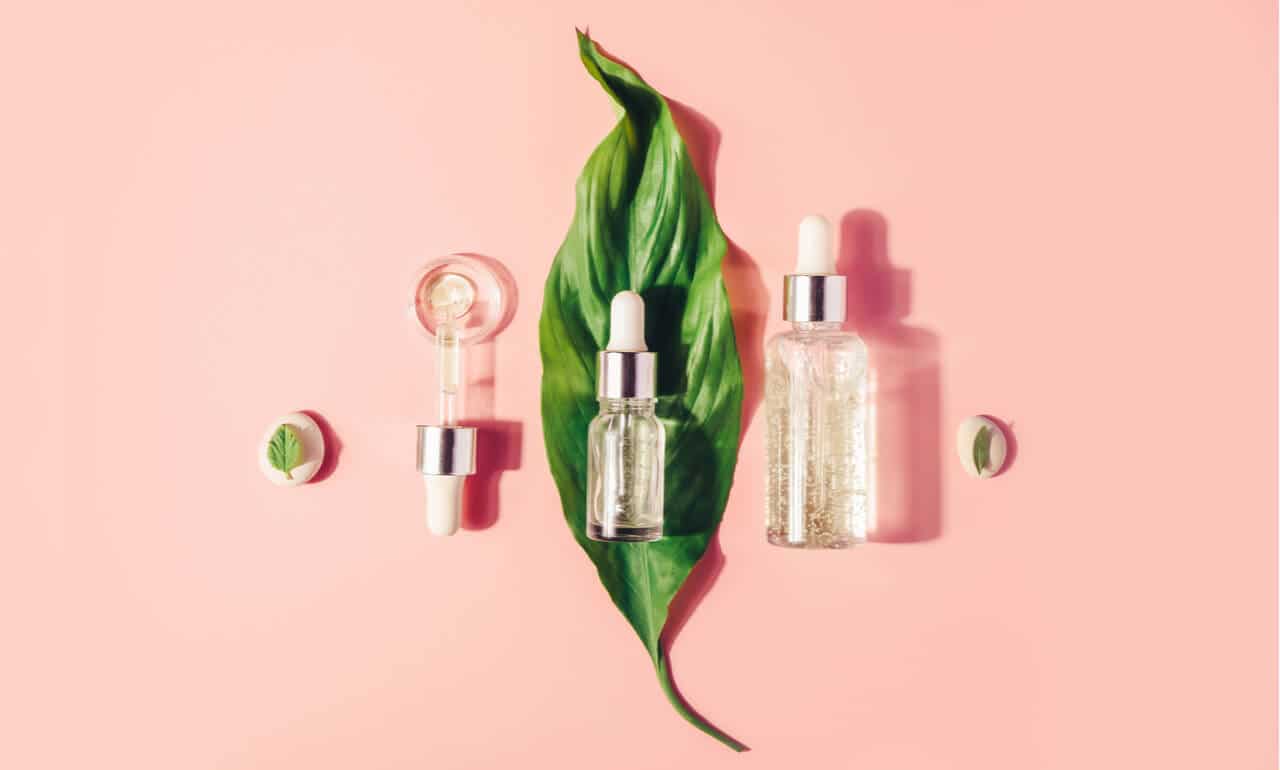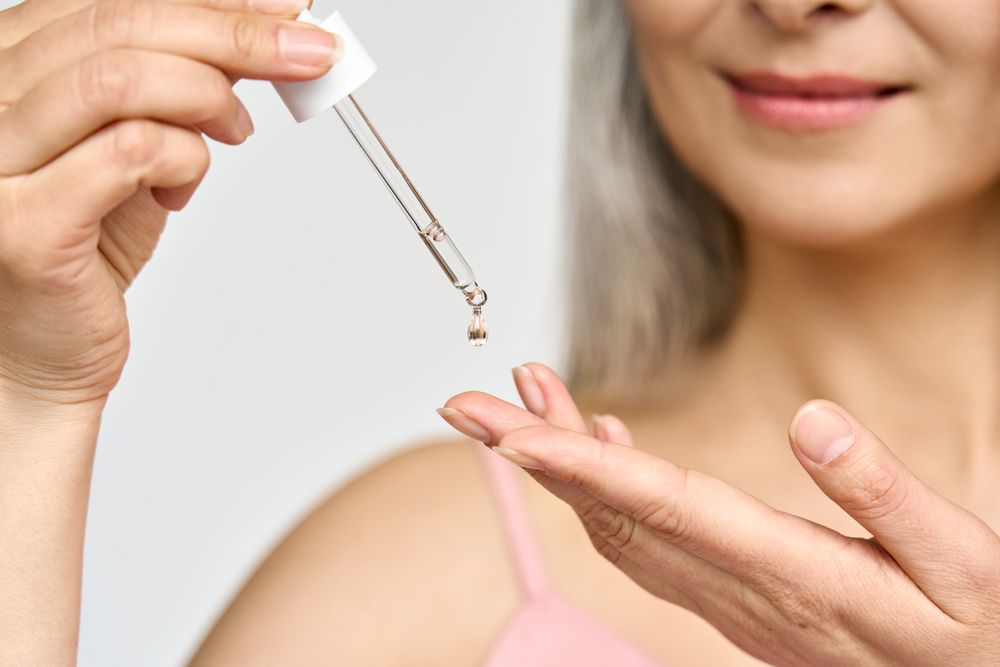[ad_1]
Why is there a sudden evolution in the beauty and cosmetic industry about hyaluronic acid? What is so magical about this ingredient that all new and trending products claim to be rich in it? The magical thing is that it works wonders on your skin, making it look young, plump, and wrinkle-free. This article explains all about hyaluronic acid, its sources, its benefits and much more.
What is Hyaluronic Acid?
Hyaluronic acid is present in your eyes and acts as a cushioning agent between your joints. Your body produces it endogenously. Each cell has hyaluronic acid because you need it for the optimum functioning of the cell. In addition, hyaluronic acid has a fantastic property of retaining moisture within the cell. It can retain moisture up to 100 times its actual weight. As a result, it gives you youthful skin.
However, the acid reduces over time with ageing and poor hydration habits. In that case, you need to supply this acid from dietary sources. Few sources provide hyaluronic acid directly, and some sources enhance its production. Let’s read on about the various sources.
Foods High in Hyaluronic Acid
Soy Foods
Soybean is rich in protein and other nutrients. You can use it to make several food products like soya chunks, tofu, tempeh, soy milk etc. Soy and soy foods contain isoflavones, which are phytoestrogens, also known as plant sources of oestrogen. As per research, isoflavones in soybean boost hyaluronic acid production in the body. Some of the ways to consume soy are:
- Soy Milk: You can use it in milkshakes and smoothies.
- Soy chunks: You can toss it with your favourite veggies as a meat substitute.
- Soybean: You can use it as your favourite dressing and choice in the salads.
- Tofu: You can stir-fry it (with or without veggies), make a gravy or eat it as a side dish with cooked cereals.
- Tempeh: You can use it in multigrain sandwiches and burgers, with lettuce and other veggies.
- Soy sauce: It is an excellent addition to your salads. In addition, you can also make delicious dips.
Fruits of the Citrus Family
Citrus fruits, such as oranges, lemons, limes, grapefruits, mandarins etc., contain a high amount of immune-boosting vitamin C and naringenin. Naringenin blocks the functioning of the enzyme, which breaks down hyaluronic acid in the body. Hyaluronidase is the enzyme’s name that prevents hyaluronic acid production in the body. According to a study, naringenin prevents this enzyme from working, enhancing hyaluronic acid production. Given below are some ways in which you can consume citrus fruits.
- Squeeze them into a fresh fruit juice for a mid-morning snack.
- Consume whole as a fruit to squeeze out maximum benefits.
- You can add them to your bowl of yoghurt or smoothie to give colour and flavour to your cereal.
- Easy to incorporate in salad dressings.
- You can eat them by making a colourful fruit bowl with your other favourite fruits.
Vegetables with Tubes
Potatoes, sweet potatoes, jicama, lotus root, and other tubers are excellent sources of hyaluronic acid in the human body. They are suitable substitutes for staple foods like bread and rice because they are primarily carbohydrates. In addition, tubers are high in potassium, fibre, and vitamins A, C, and B6. So, include them in your diet to get all the nutrients. In addition, you also get enough healthy starch. These veggies also provide you with energy and satiation. Some forms of incorporating them into your diet are as follows:
- You can add tuber veggies to your soups
- Eat them as a side dish with steaks
- You can also eat them as a side dish with tossed vegetables
- Use them as a baked starter in your meals
Leafy Green Vegetables
Consuming green leafy vegetables like kale, lettuce, collard greens, bok choy, and spinach daily has various health benefits. As per studies, magnesium in these vitamin-rich foods aids in the production of hyaluronic acid. You can easily incorporate green leafy vegetables into your diet through salads or by steaming or sautéing them for a delicious side dish. Alternatively, you could mix them into vegetable and fruit juice to add variety to your meal planning. Some ways of incorporating them into your diet are as follows:
- Add green leafy vegetables to your soups
- You can eat them as salads
- Blend them into a smoothie
- You can saute it with other vegetables to make a delicious side dish
- You can toss it into pasta or bake it to make an au gratin.
Seeds and Nuts
You can also find magnesium in nuts and seeds, which can help with hyaluronan synthesis. In addition, a nut-rich diet helps give smooth skin texture and a natural glow.
Seeds have a higher magnesium content than nuts. For example, dried pumpkin seeds have the highest magnesium concentration. Brazil nuts, cashews, and pine nuts are also magnesium-rich. Some ways of incorporating them into your diet are as follows:
- Use them in your milkshakes to add fibre, nutrients and crunch to your milkshakes
- You can top them with fruit yoghurt bowls
- You can blend them with smoothies
- Add them to cereal bowls for a nutritious breakfast
Broccoli
Broccoli contains a lot of magnesium, which increases the amount of hyaluronan in the skin. As a result, it helps keep the skin moisturised and healthy. In addition, broccoli also has vitamin C, which helps prevent wrinkles by reducing inflammation and promoting collagen production. Some ways of incorporating it into your diet are as follows:
- Broccoli soup is delicious food to include in your diet
- You can eat it as a side dish with steaks and tuber vegetables
- Enjoy it as a baked starter in your meals
Bone Broth
Bone broth is one of the few foods that contain many hyaluronic acids because it comes from the connective tissues and bones of animals. Poultry bones and cartilage are simmered in water to make this broth. These acids, various proteins and amino acids support collagen production gradually, which takes longer.
Minerals like calcium, zinc, and potassium are also present in this broth. The benefits of hyaluronic acid and these other nutrients work together to promote healthy, supple skin. Some ways of incorporating them into your diet are as follows:
- You can have bone broth as a soup
- You can also eat it as a side dish with multigrain bread or roti
Meats from Organs
The organs of most livestock, including beef, lamb, pork, and poultry, contain high levels of hyaluronic acid. While a diet high in organ meats may provide plenty of hyaluronic acids, it also comes with it’s high amount of calories and fat. However, eating small amounts of organ meats can help your body maintain or slightly increase its hyaluronic acid reserves. Some ways of incorporating them into your diet are as follows:
- You can eat them as a starter.
- They are also delicious and healthy to eat as a side dish with multigrain bread or roti.
Benefits of Hyaluronic Acid
Hydrates the Skin
Hyaluronic acid has a wide usage when hydrating the skin. It is available as a supplement or a cream that you can apply topically. Hyaluronic acid can help people with dry skin to retain moisture and hydration and improve their quality of life. According to research, topical hyaluronic acid results in skin hydration of up to 96% when used as a lotion, serum, and cream. In addition, it leaves the skin supple and soft.
Aids in Wound Healing
Hyaluronic acid aids in the moisture retention of the skin and the tissue regeneration process involved in wound healing. It has wound healing properties and thus speeds up the healing process. It reduces inflammation and regulates tissue repair, as proven by research.
Hyaluronic Acid Smoothens Skin Texture
Changes in a person’s skin may have a negative psychosocial impact. It can happen as a result of the ageing process. However, research proves that hyaluronic acid helps reduce skin roughness and increase skin elasticity.
Anti-Ageing Properties
The skin contains about half of the body’s total hyaluronic acid. Changes in this amount, possibly due to UV exposure, can cause wrinkles to appear. However, hyaluronic acid can reduce the depth of wrinkles and improve skin firmness and elasticity. The depth of wrinkles reduces by up to 40%. In addition, skin firmness and elasticity increase by 55% by using hyaluronic acid.
Relieves Joint Pain
Injections into the joints can help lubricate them. It helps to lubricate the joints, hence relieving joint pain. Combining hyaluronic acid with medications used to treat these symptoms, such as nonsteroidal anti-inflammatory drugs or corticosteroids, increased the effectiveness of these treatments.
Helps Get Rid of Dermatitis
Hyaluronic acid can aid in the relief of mild to moderate eczema symptoms. Eczema is a condition of the skin wherein there is a lot of inflammation and itching. In an experiment, hyaluronic acid in foam was more pleasant to use and improved eczema better than observing a ceramide-containing emulsion cream.
Hyaluronic Acid Helps Prevent Gum Disease
Hyaluronic acid aids in the healing of wounds. People with gum disease and mouth ulcers will also benefit from it.
Helps Prevent Acid Reflux
Acid reflux and heartburn are symptoms of gastroesophageal reflux disease (GERD), a common condition. According to a study, hyaluronic acid supplements combined with acid suppression helped people with non-erosive reflux disease, a type of GERD. Therefore, it is safe to say that hyaluronic acid helps improve GERD and acid reflux symptoms.
Relieves Dry Eyes
Hyaluronic acid is present in high concentrations in the eyes. As a result, hyaluronic acid eye drops can aid in treating dry eye symptoms.
Hyaluronic Acid Prevents Vaginal Dryness
Following menopause, females frequently experience vaginal dryness. Hyaluronic acid application topically is better and a safer method than hormonal treatment. It is also more effective. People who cannot use hormonal therapies, such as estrogen cream, may benefit from hyaluronic acid alone to alleviate symptoms.
Symptoms of Overuse of Hyaluronic Acid
Hyaluronic acid is highly beneficial for the reasons mentioned above. However, if you are consuming good sources of hyaluronic acid and using a skincare product enriched with it, you should be cautious. Too much hyaluronic acid can have the following side effects:
- Redness on the skin.
- Itching
- Pain
- Bruising
- Swelling
- Tingling
Allergic Reactions
You should consult a dermatologist to know whether you are allergic to hyaluronic acid or not. Consult a certified medical expert before using or consuming hyaluronic acid in any form, if:
- Pregnant.
- Breastfeeding.
- Have a chronic medical condition.
- Use blood thinners.
- Have scleroderma – a skin condition in which your body does not use hyaluronic acid.
- Have allergies to proteins like egg, chicken, chicken feathers etc.
Caution
Kids and teenagers should not use hyaluronic acid as a serum or pill. However, they can consume food items rich in it if they’re not allergic to it.
Ideal Dose
Clinicians have suggested an ideal dose of not more than 240 mg.
The Bottom Line
Magical hyaluronic acid has numerous benefits. Although its production is endogenous in your body, it reduces due to stress, ageing etc. The acid is responsible for entrapping moisture into the cells. In addition, it is essential for healthy skin. Adding it to your diet from food sources will result in healthier and younger-looking skin. It works wonders on the skin dermatologically. So, add hyaluronic acid foods into your diet and get supple and smooth skin now.
Frequently Asked Questions (FAQs)
1. Which foods contain the most hyaluronic acid?
A. Soy foods such as tofu, soy chunks, soy milk and citrus fruits such as oranges, lemons, limes, and grapefruits contain the most hyaluronic acid. Also, tuber vegetables such as potatoes and sweet potatoes, and green leafy vegetables are excellent sources of hyaluronic acid. In addition, bone broth and organs from meat provide plenty of hyaluronic acids to promote healthy skin.
2. What is a good source of hyaluronic acid?
A. Bone broth is one of the best food sources of hyaluronic acid because it comes directly from the connective tissues and animal bones. The bones simmer in water over a long period. As a result, nutrients, including hyaluronic acid, leach from the bones and mix into the water. Other foods such as citrus fruits, soy products, sweet potatoes, and leafy greens also provide nutrients that can naturally increase hyaluronic acid synthesis in your body.
3. Does lemon contain hyaluronic acid?
A. Citrus fruits like lemon contain vitamin C, which is needed to stimulate hyaluronic acid production in the body. Moreover, it contains naringenin, which blocks the working of the enzyme hyaluronidase. Hyaluronidase breaks down hyaluronic acid in the body. But naringenin prevents this enzyme from working. As a result, it enhances hyaluronic acid production.
4. How do you get natural hyaluronic acid?
A. You can get natural hyaluronic acid from leafy green vegetables, soy-based foods, citrus fruits and tuber vegetables. That is because they increase hyaluronic acid’s production in your body. Moreover, including bone broth in your diet could be the best way to get natural hyaluronic acid.
5. Does coconut oil have hyaluronic acid?
A. No, coconut oil does not have hyaluronic acid. Coconut oil is occlusive, which soothes the skin and maintains moisture inside. As a result, it doesn’t let the moisture evaporate. Coconut oil contains high linoleic acid but not hyaluronic acid.
6. What food has more collagen?
A. Vitamin C plays an essential part in producing pro-collagen, our body’s precursor to collagen. Thus, acquiring sufficient vitamin C is crucial. Citrus fruits such as limes, grapefruits, lemons and oranges are rich in this nutrient. In addition, other foods that have collagen are spinach, cashews, tomatoes, bell peppers, avocados, soy, fish, and egg whites. Chicken skin and meat are also rich sources of collagen.
7. Is hyaluronic acid in apple cider vinegar?
A. Apple cider vinegar is not a direct source of hyaluronic acid. However, it contains malic acid and acetic acid, which increase the production of hyaluronic acid and collagen in the body. As a result, it makes the skin more elastic and hydrated.
8. Does Aloe Vera have hyaluronic acid?
A. Aloe vera promotes collagen synthesis and hyaluronic acid due to sterols. You can apply a thin layer of gel on your face after cleansing and allow it to sit on your skin for 10 minutes. Then, rinse with cool water and moisturise. Doing this once a day will help your skin to retain moisture.
9. Does soy milk contain hyaluronic acid?
A. Soy and soy foods contain isoflavones, which are phytoestrogens, also known as plant sources of oestrogen. Isoflavones boost hyaluronic acid production in the body, raising hyaluronic acid levels.
10. Does chicken bone broth have collagen?
A. Collagen is a structural protein found in skin, cartilage and bone. So when you boil the bone broth, the collagen breaks down into various other health-promoting amino acids. Therefore, consuming this broth increases the plasma levels of the precursor amino acids, which are required to form collagen. However, chicken bone broth has around 10% less per serving than beef bone broth.
[ad_2]
Source link



